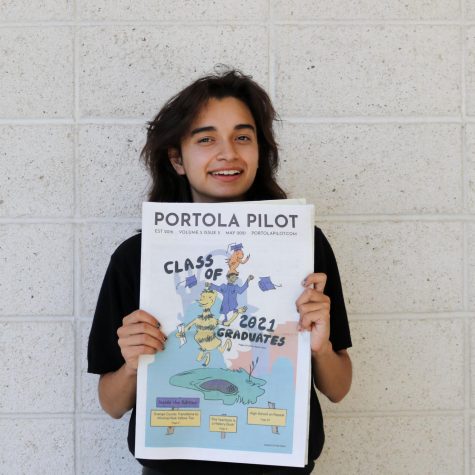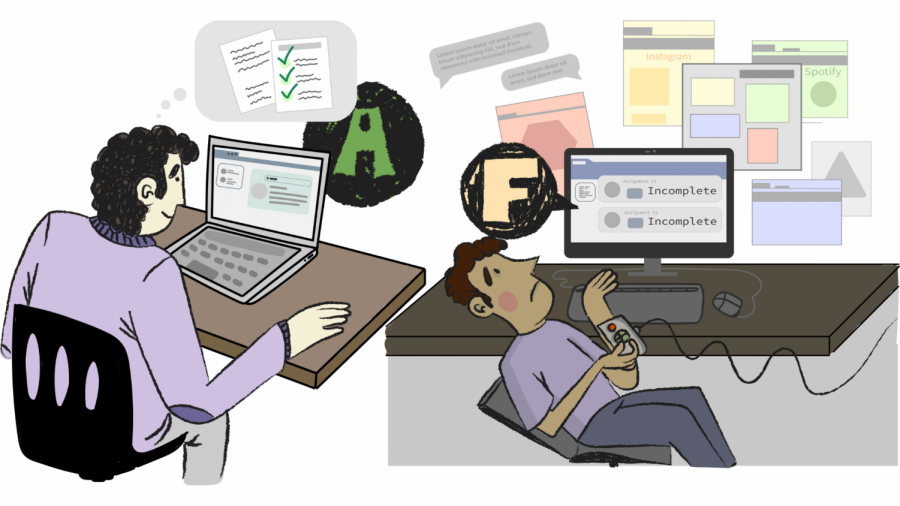Staff Editorial: Students Cannot Afford to Slack Off
While many may see online school as a way to do minimal work, students and teachers must work in tandem to manage Emergency Distance Learning.
With Irvine Unified School District’s (IUSD) closure of all schools and facilities in the district, effective March 16 until April 6 at the earliest, students will participate in Emergency Distance Learning (EDL) to continue classes digitally. A major concern with this switch is that students will fall behind in school.

Diligence on the part of both students and teachers will ensure minimal learner disengagement from missing two weeks of in-person education. The best way to encourage productivity is two-fold: first, students should establish a consistent work schedule, and second, teachers must select online tools most conducive to this schedule and engagement.
During EDL training on Monday, teachers were encouraged to focus on asynchronous learning.
“Asynchronous [learning] would be more like you have an activity where students would be able to log on and do whatever assignment or get into a group document in a certain time window,” principal John Pehrson said. “So you might say, ‘Sometime on Monday or Tuesday, go into this document and insert a slide or answer these prompts.’”
This would allow students to complete their work on their own time rather than have to finish work during a specific time in the day, which facilitates successful online learning, according to researchers from Louisiana State University.
“The most effective [online teaching methods are] assignments and course lectures where I can dictate my own pace,” California State University, Fullerton student Jamal Mansouri said. “With assignments due on weekends, I can prioritize my time more effectively and efficiently to understand the materials instead of working around the school schedule.”
For this to work, students must treat EDL with the same attitude they have during school, as these two weeks serve to meet graduation requirements and legal requirements for hours of learning.
With attention spans that work best in 10 to 15 minute periods according to Psychology Today, students should divide their workloads and lessons into smaller time periods to avoid losing focus.
Focus on one class at a time, preferably between 8 a.m. and 2 p.m, which is when people are most productive, according to Simon Fraser University. Taking breaks when focus wanes and setting an overall time limit to complete schoolwork will provide students a healthy balance of work in the absence of in-person instruction.
“The way I stay organized and on top of it is to just plan and write everything down [to] ensure nothing is forgotten and see what I need to finish sooner than later,” Irvine Valley College student Angie Tran said. “Having set ‘homework days’ are really important and just making sure you use those days to really work and finish everything you need to finish.”
Students from local colleges that have also been shut down have found communication with professors essential to prevent a sense of detachment from their classes, according to Portola High alumna and current University of Southern California student Liz Moerman.
“Google Classroom is a really great tool because it clearly organizes assignments and announcements, as well as Canvas,” Moerman said. “However, in terms of direct communication, Portola may need to use email more than it does now, in my opinion.”
Finally, teachers should not associate online learning with more time for students to work; it is important for both students and teachers to consider an acceptable daily workload just as they would in the classroom.
“Things I find ineffective are when professors assign more than five assignments a day and expect them to be due the next day,” Tran said. “If teachers and professors want students to stay engaged throughout the entire online course, then they need to make sure students are also getting enough time to finish and actively work on them.”
The key to adjusting curriculum to accommodate the coronavirus (COVID-19) outbreak without falling behind is to plan carefully to ensure students’ and teachers’ time are used to maximize efficiency and efficacy.
Your donation will support the student journalists of Portola High School. Your contribution will allow us to purchase equipment and cover our annual website hosting costs.

Nate Taylor is the 2021-22 front page editor and photo editor. He is ready to improve his design skills and create memorable Portola Pilot front covers....

Julia Kim is your 2019-20 Opinion Editor, continuing her fourth - and last - year on the Pilot! Outside of journalism, you can find her at the dance studio,...




